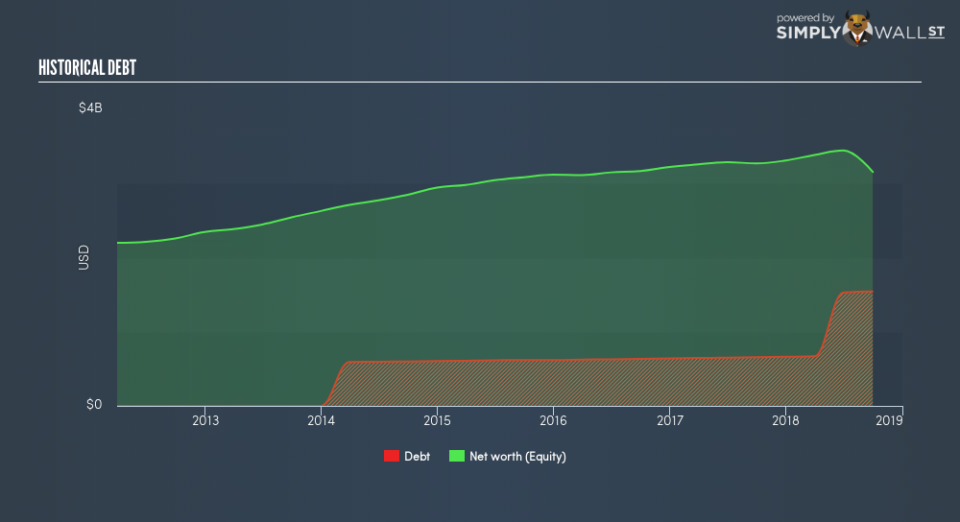Is Akamai Technologies, Inc.’s (NASDAQ:AKAM) Balance Sheet Strong Enough To Weather A Storm?

Small-cap and large-cap companies receive a lot of attention from investors, but mid-cap stocks like Akamai Technologies, Inc. (NASDAQ:AKAM), with a market cap of US$9.7b, are often out of the spotlight. However, history shows that overlooked mid-cap companies have performed better on a risk-adjusted manner than the smaller and larger segment of the market. AKAM’s financial liquidity and debt position will be analysed in this article, to get an idea of whether the company can fund opportunities for strategic growth and maintain strength through economic downturns. Note that this commentary is very high-level and solely focused on financial health, so I suggest you dig deeper yourself into AKAM here.
View our latest analysis for Akamai Technologies
Does AKAM produce enough cash relative to debt?
AKAM has built up its total debt levels in the last twelve months, from US$657m to US$1.5b , which includes long-term debt. With this growth in debt, AKAM’s cash and short-term investments stands at US$1.8b , ready to deploy into the business. Additionally, AKAM has produced cash from operations of US$920m over the same time period, leading to an operating cash to total debt ratio of 60%, meaning that AKAM’s debt is appropriately covered by operating cash. This ratio can also be interpreted as a measure of efficiency as an alternative to return on assets. In AKAM’s case, it is able to generate 0.6x cash from its debt capital.
Can AKAM pay its short-term liabilities?
With current liabilities at US$1.2b, it appears that the company has been able to meet these obligations given the level of current assets of US$2.4b, with a current ratio of 2.03x. Generally, for IT companies, this is a reasonable ratio since there’s a sufficient cash cushion without leaving too much capital idle or in low-earning investments.
Does AKAM face the risk of succumbing to its debt-load?
AKAM is a relatively highly levered company with a debt-to-equity of 49%. This is not unusual for mid-caps as debt tends to be a cheaper and faster source of funding for some businesses. We can test if AKAM’s debt levels are sustainable by measuring interest payments against earnings of a company. Ideally, earnings before interest and tax (EBIT) should cover net interest by at least three times. For AKAM, the ratio of 37.79x suggests that interest is comfortably covered, which means that lenders may be inclined to lend more money to the company, as it is seen as safe in terms of payback.
Next Steps:
AKAM’s high cash coverage means that, although its debt levels are high, the company is able to utilise its borrowings efficiently in order to generate cash flow. This may mean this is an optimal capital structure for the business, given that it is also meeting its short-term commitment. This is only a rough assessment of financial health, and I’m sure AKAM has company-specific issues impacting its capital structure decisions. I suggest you continue to research Akamai Technologies to get a better picture of the mid-cap by looking at:
Future Outlook: What are well-informed industry analysts predicting for AKAM’s future growth? Take a look at our free research report of analyst consensus for AKAM’s outlook.
Valuation: What is AKAM worth today? Is the stock undervalued, even when its growth outlook is factored into its intrinsic value? The intrinsic value infographic in our free research report helps visualize whether AKAM is currently mispriced by the market.
Other High-Performing Stocks: Are there other stocks that provide better prospects with proven track records? Explore our free list of these great stocks here.
To help readers see past the short term volatility of the financial market, we aim to bring you a long-term focused research analysis purely driven by fundamental data. Note that our analysis does not factor in the latest price-sensitive company announcements.
The author is an independent contributor and at the time of publication had no position in the stocks mentioned. For errors that warrant correction please contact the editor at editorial-team@simplywallst.com.

